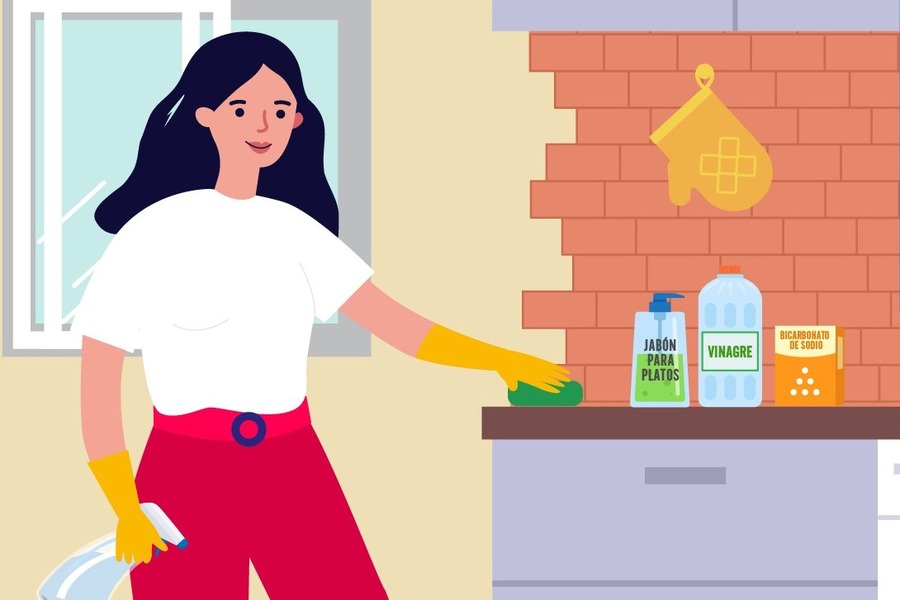
The Haz Waste Program uses an equity approach to focus services where they are needed most, with resources designed for communities’ unique information needs
Black, Indigenous, and People of Color (BIPOC) communities often experience disproportionate health impacts from hazardous material exposure. Nationally, more than half the people who live close to hazardous waste are BIPOC, and BIPOC are more likely to die of environmental causes. Everyone has a right to a clean and healthy home environment. In King County, the Haz Waste Program is committed to reducing health disparities from hazardous waste through equitable engagement.
That’s why the Haz Waste Program focused a series of outreach efforts around the use of bleach in Spanish-speaking households.
Bleach is a common household product for many Latinx families. While bleach is a powerful disinfectant that can reduce the spread of illnesses, it can also cause headaches, and skin, eye, and respiratory irritation if misused. And it can be fatal if ingested. That’s why the Haz Waste Program launched the award-winning “Ojo con el cloro” campaign in 2020 to provide in-language information about the health risks associated with using bleach. Now, the Haz Waste Program is expanding on the original campaign by sharing in-language information about safer cleaning alternatives. Phase 2 of the campaign, launching on August 16, will include recipes to make homemade cleaning solutions with ingredients commonly found at your home.
While these recipes are available for anyone to use, focusing on the Latinx community provides equitable access for people who use Spanish to learn about the harmful impact of bleach on a person’s health and the environment.
The “Ojo con el cloro” awareness campaign is the product of research working with community groups to understand Spanish-speaking communities’ attitudes and habits towards cleaning practices. By sharing this campaign, the Haz Waste Program hopes to help make cleaning safer for King County families.
Haz Waste Program staff are deeply committed to serving all people who live and work in King County and ensuring that race and ethnicity are not determinants of hazardous materials exposure. The “Ojo con el cloro” campaign is just one example.
Other Haz Waste Program initiatives that work to eliminate race and ethnicity as determinants of hazardous waste exposure are the co-created Safer Healthy Homes project with Mother Africa. Another example is the Public Health Partnership program that aims to reduce elevated blood lead levels in refugee children living in King County.
The Haz Waste Program strives to be a community-centered organization that partners with communities for inclusive outreach and engagement. Learn more about our work towards racial equity by reviewing our Racial Equity Strategic Plan, which sets a path to improve policies, practices, and service delivery.